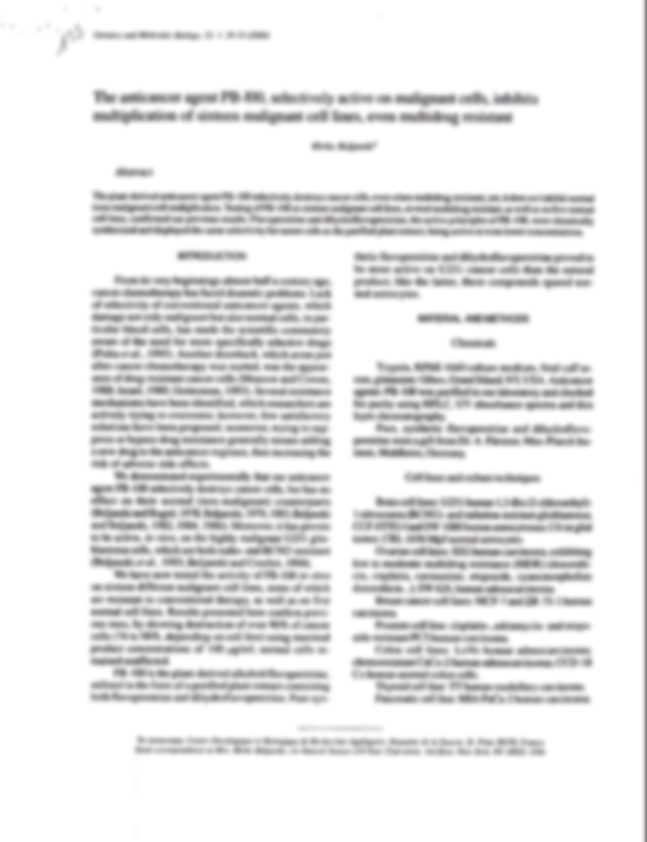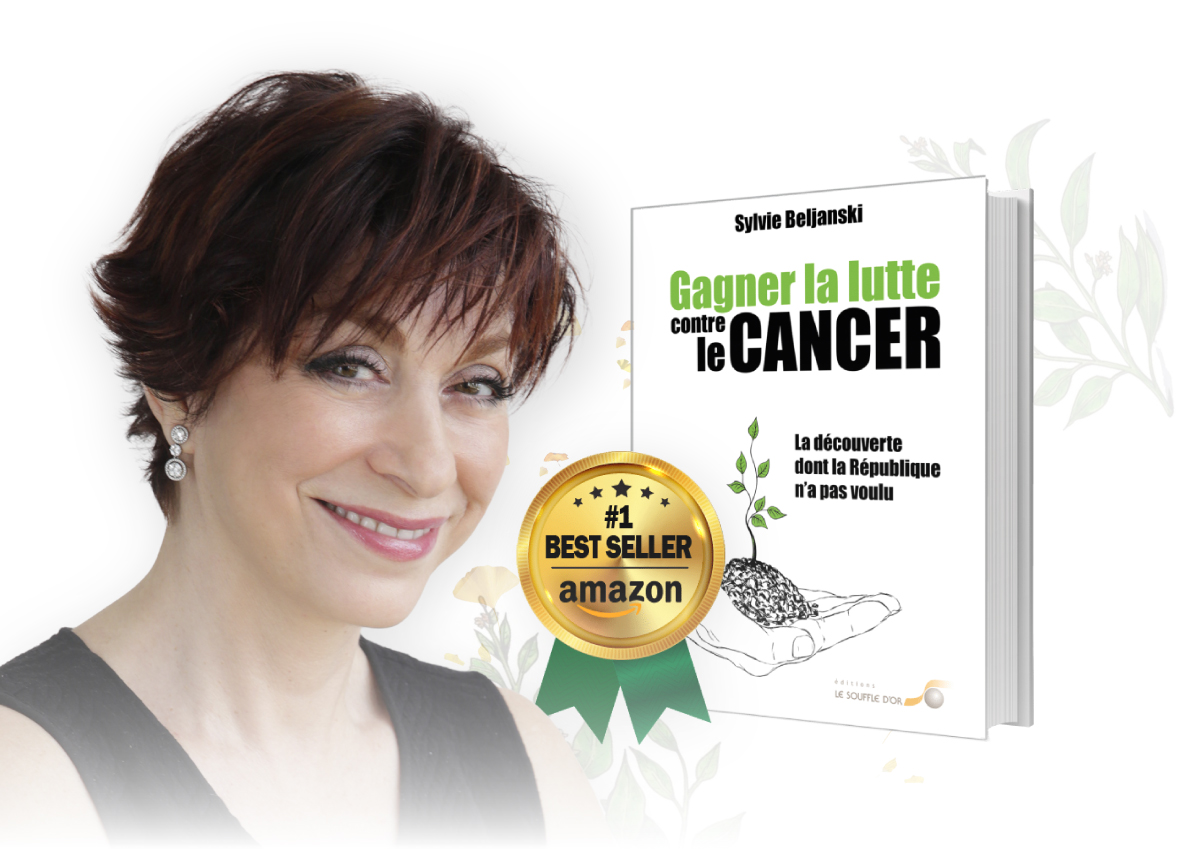101 – Growth inhibition of crown-gall tissues in relation to the struture and activity of DNA
Physiol. Plant., 64, 1985, pp. 177-184.
Available in English only
ABSTRACT: The growth of Crown-gall cells cultures in vitro (Nicotiana tabacum L. cv. White Burley and Parthenocissus tricuspidata cv. Veitchii) is inhibited by alstonine (BG-8), a plant alkaloid, the anti-cancer effect of which has previously been demonstrated on animals and plants. The growth of normal cells is only slightly affected. The inhibitory effect of BG-8 on crown-gall cells is antagonized byindole-3-ecatic acid (IAA) added to the culture medium. Kinetin associated with IAA does not prevent this inhibitory effect. BG-8 present in the culture medium containing the two types of hormones seems to modify the later hormonal requirement of Parthenocissus crown-gall tissues…
ABSTRACT: The growth of Crown-gall cells cultures in vitro (Nicotiana tabacum L. cv. White Burley and Parthenocissus tricuspidata cv. Veitchii) is inhibited by alstonine (BG-8), a plant alkaloid, the anti-cancer effect of which has previously been demonstrated on animals and plants. The growth of normal cells is only slightly affected. The inhibitory effect of BG-8 on crown-gall cells is antagonized byindole-3-ecatic acid (IAA) added to the culture medium. Kinetin associated with IAA does not prevent this inhibitory effect. BG-8 present in the culture medium containing the two types of hormones seems to modify the later hormonal requirement of Parthenocissus crown-gall tissues…
100 – Three alkaloids as selective destroyers of the proliferative capacity of cancer cells
IRCS Med. Sci., 12, 1984, pp. 587-588
Available in English only
ABSTRACT: Most of the anti-cancer drugs at present used in cancer chemotherapy exhibit tissue toxicity and cause severe damage to harmatopoietic cells. In addition, they are mutagenic and/or carcinogenic in animals and in plants. Using the Oncotest, we have selected three alkaloïds, alstonine, serpentine and sempervirine that possess the capacity to sistinguish in vitro between DNAs isolated from cancerous and healthy mammalian and plant tissues. They bind to the initiation sites of destabilized cancer DNA synthesis, without affecting that of DNAs from healthy tissues. Here we demonstrate that each of the three alkaloïds, which remain inactive against normal eukaryotic cells, selectively and completely destroys the proliferative potential of various established cancer cell lines maintained in and in vitro culture.
ABSTRACT: Most of the anti-cancer drugs at present used in cancer chemotherapy exhibit tissue toxicity and cause severe damage to harmatopoietic cells. In addition, they are mutagenic and/or carcinogenic in animals and in plants. Using the Oncotest, we have selected three alkaloïds, alstonine, serpentine and sempervirine that possess the capacity to sistinguish in vitro between DNAs isolated from cancerous and healthy mammalian and plant tissues. They bind to the initiation sites of destabilized cancer DNA synthesis, without affecting that of DNAs from healthy tissues. Here we demonstrate that each of the three alkaloïds, which remain inactive against normal eukaryotic cells, selectively and completely destroys the proliferative potential of various established cancer cell lines maintained in and in vitro culture.
10 – Comparaison de souches bactériennes résistantes à des antibiotiques avec des souches sensibles de même espèce – II : Cas de la pénicilline
C.R. Acad. Sci., 1950, 230, pp.875-877.
Available in French only
ABSTRACT: Tandis qu’une souche de Staphylococcus aureus streptomycino-résistante n’accumule que de l’acide ribonucléique, une souche de même espèce, mais pénicillino-résistante, accumule non seulement des quantités supérieures d’acide ribonucléique, mais également de protéines, de mononucléotides puriques et de composés phosphoriques acido-solubles. Ces différences sont peut-être basées sur les modes d’action différents des deux antibiotiques quant aux acides nucléiques : la pénicilline n’empêche pas la dépolymérisation de l’acide ribonucléique qui se dégrade et participe à la synthèse des protéines. La streptomycine, au contraire, se complexifie avec l’acide ribonucléotique (ou avec les nucléoprotéines) et freine sa dépolymérisation.
ABSTRACT: Tandis qu’une souche de Staphylococcus aureus streptomycino-résistante n’accumule que de l’acide ribonucléique, une souche de même espèce, mais pénicillino-résistante, accumule non seulement des quantités supérieures d’acide ribonucléique, mais également de protéines, de mononucléotides puriques et de composés phosphoriques acido-solubles. Ces différences sont peut-être basées sur les modes d’action différents des deux antibiotiques quant aux acides nucléiques : la pénicilline n’empêche pas la dépolymérisation de l’acide ribonucléique qui se dégrade et participe à la synthèse des protéines. La streptomycine, au contraire, se complexifie avec l’acide ribonucléotique (ou avec les nucléoprotéines) et freine sa dépolymérisation.
1- A propos du microdosage du ribose dans les acides nucléiques et leurs dérivés
C.R. Soc. Biol. 1949, CXLIII, pp. 174-175. et M. BELJANSKI, Ann. Inst. Pasteur, 1949, 76, pp. 451-455.
Document not available online : “A propos du microdosage du ribose dans les acides nucléiques et leurs dérivés”




